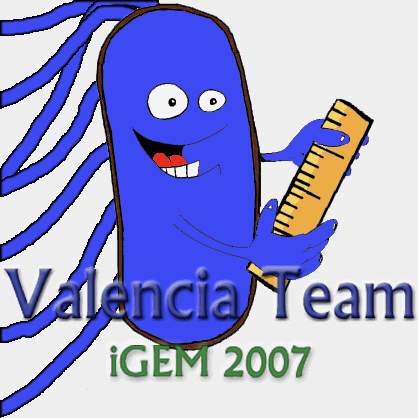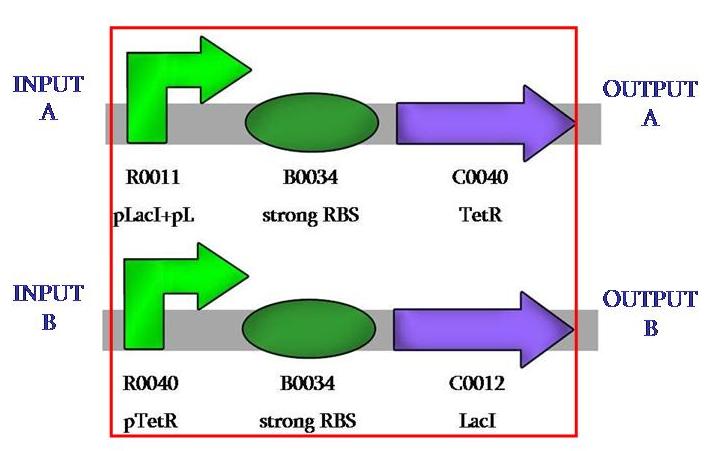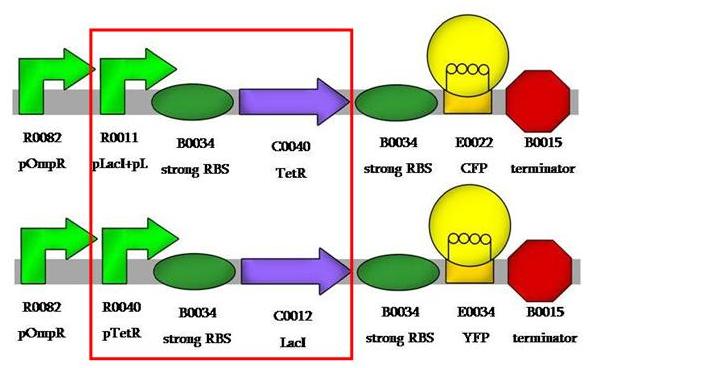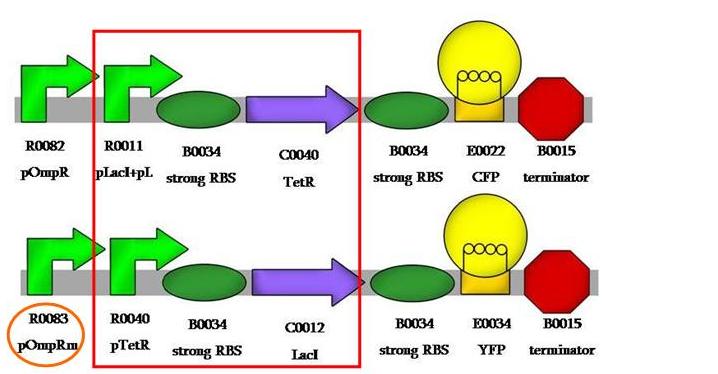Valencia/Lab Work
From 2007.igem.org
| Line 17: | Line 17: | ||
Now, we had to assemble the sensing part of our system, this would be the osmolarity-sensing promoters pOmpR and pOmpRm. we wanted to assemble them in order to build the E.coliRuler, the promoter calibrator device. | Now, we had to assemble the sensing part of our system, this would be the osmolarity-sensing promoters pOmpR and pOmpRm. we wanted to assemble them in order to build the E.coliRuler, the promoter calibrator device. | ||
| - | We first wantted to assemble pOmpR in both plasmids, so to validate the model and yield some system-specific | + | We first wantted to assemble pOmpR in both plasmids, so to validate the model and yield some system-specific parameters, then we wanted to compare pOmpR to pOmpRm. |
This would be our first system's design: | This would be our first system's design: | ||
| Line 29: | Line 29: | ||
At last, we desired to have both constructs in one single bacterium, that is the reason why we had in mind to change the resistance backbone of one of the constructs to kanamicine. This way we would have a double selection for the finally transformed bacteria. | At last, we desired to have both constructs in one single bacterium, that is the reason why we had in mind to change the resistance backbone of one of the constructs to kanamicine. This way we would have a double selection for the finally transformed bacteria. | ||
| - | === | + | ===Future experiments=== |
We will first start validating our model. We will use pOmpR as both inputs of the system and asses the dynamic behaviour of the system as well as experiments varying the osmolarity of the medium. This way we hope to define the values of our equations, thus taking the leap from an effective model to a model that describes more correctly the system we work on. | We will first start validating our model. We will use pOmpR as both inputs of the system and asses the dynamic behaviour of the system as well as experiments varying the osmolarity of the medium. This way we hope to define the values of our equations, thus taking the leap from an effective model to a model that describes more correctly the system we work on. | ||
Revision as of 17:24, 23 October 2007

|
|
Construction
We aimed for a straight-forward strategy that used all the parts from the registry of parts. Our first achievement was to ligate the repressed promoter with the repressors, so to have two different constructions like this:
This is the comparator, a device that permits the modularity of the system, as one can use any desired input or ouput. In our case, we wanted to use fluorescence.
We aimed to assemble the fluorescence proteins backwards, those would be our output signals. We would have those constructs:
Now, we had to assemble the sensing part of our system, this would be the osmolarity-sensing promoters pOmpR and pOmpRm. we wanted to assemble them in order to build the E.coliRuler, the promoter calibrator device.
We first wantted to assemble pOmpR in both plasmids, so to validate the model and yield some system-specific parameters, then we wanted to compare pOmpR to pOmpRm.
This would be our first system's design:
And, finally, we would like to have compared pOmpR to pOmpRm, like:
At last, we desired to have both constructs in one single bacterium, that is the reason why we had in mind to change the resistance backbone of one of the constructs to kanamicine. This way we would have a double selection for the finally transformed bacteria.
Future experiments
We will first start validating our model. We will use pOmpR as both inputs of the system and asses the dynamic behaviour of the system as well as experiments varying the osmolarity of the medium. This way we hope to define the values of our equations, thus taking the leap from an effective model to a model that describes more correctly the system we work on.
Then, with this corrected model, we will be able to precisely study the differences between pOmpR and pOmpRm and to calibrate them. This way, we could also use this model to make some good predictions about what parameters we could tune in order to make the system behave the way we want.
Once we have calibrated pOmpR and pOmpRm, we will aim to a third variant of this promoter that will have different strenght.




